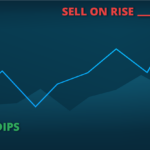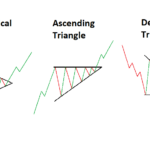What is marketA location or entity where people and entities can negotiate and trade assets of value. manipulation?
In the world of trading, market manipulation is defined as the act of artificially inflating or deflating the price of securities such as stocks, currencyA financial medium for the exchange of value. In economics, it is the monetary system employed by a ... pairs, or commodities, and even cryptocurrencies or by influencing the behaviour of the market for personal gain.
It involves intentional or willful conduct designed to defraud investors by controlling or artificially affecting the price of an assetA stock, commodity, currency, index or any other entity one may trade or invest in. or interfering with the free forces of supply and demand.
However, it is important to note that significant market movements are not always the result of market manipulation. It is normal for the supply and demand of an asset to change at any time based on fundamental factors such as news announcements, earnings reports, and company updates.
On the other hand, market manipulation employs means like spreading false information, trying to influence price quotes, posting fake orders, or creating FUD (fear, uncertainty, and doubt).
While market manipulation is generally illegal, it takes on many forms, which makes it difficult for regulators and authorities to detect despite having laws in place prohibiting such practice.
As a traderA merchant who purchases and sells assets or services for profit. In financial markets, the trader b..., it is important that you are aware of the most common forms of market manipulations and how they can affect the market and your open positions, so you can avoid falling victim to this kind of market abuse.

Modes and Methods of Market Manipulation
There are countless of ways that bad actors manipulate the market, and here are some of the most common schemes that they employ:
Pump and Dump Scheme
Pump and dump is an illegal scheme that boosts an asset’s price based on false, misleading, or greatly exaggerated statements. This type of market manipulation has become increasingly prevalent in the cryptocurrency industry, where traders have direct access to the market 24/7.
The pump and dump scheme starts with perpetrators hyping and enticing unknowing investors to buy certain stocks by claiming that they have inside information about an imminent development that will dramatically increase the share’s price.
Once these investors fall for the scheme, buy the subject stocks, and drive the price up, the perpetrators of the pump and dump scheme will sell their shares.
The substantial volumeThe amount of total trades in an asset or market during a specified time period. It is sometimes als... of these shares being “dumped” can cause the stock price to drop dramatically, which can result in huge losses to the innocent investors who took part in it.
One interesting case to pointThe unit of price change for bonds (1%), futures (0.01%), shares ($1) and mortgage fees (1% of the p... out is what happened with GameStop earlier this year. Originating from a Reddit group called WallStreetBets, retail investors were able to dramatically drive up the price of GameStop shares, which went from $4 to $483.
It didn’t help that one of the world’s richest men and Tesla CEO Elon Musk tweeted the Reddit board hyping up the stock, which resulted in GameStop shares rallying even stronger to 60% within hours after his tweet.
While Musk’s tweet moved the market significantly and the Reddit board effectively drove up the price of GameStop stocks to dramatic highs, no one can definitely say it was a pump and dump scheme or simply a normal result of the supply and demand of an asset that many people wanted to invest in.
What do you think?
Spoofing
Spoofing is another form of market manipulation scheme where the perpetrators post large buy or sell orders to make it appear that there are a lotAn amount or measurement. In forex – a standard unit of 100,000 currency pair units. of buyers or sellers for an asset in the market, even though this is not actually true.
These perpetrators have no intention of following through with their orders, but the appearance of volume it created in the market can influence the decision of innocent traders to buy or sell an asset, which the spoofers can take advantage of and potentially profit from.
Churning
While brokers have a duty to recommend sound investments to their clients, churning is the unethical practice by a brokerA 3rd party that negotiates a transaction between 2 other parties – a buyer and a seller. of excessively buying and selling assets in a client’s account for the purpose of earning more commissions.
Churning can result in substantial losses to a client’s account because even if the trades can be profitable, they can result in greater tax liability for the client.
This type of market manipulation is often hard to detect, and in some cases, the trader may need the assistance of an experienced financial securities attorney to determine if churning has occurred.
Front Running
Front running is acting on insider information, either by buying or selling an asset, before the release of a public announcement that could significantly impact the asset’s market price.
A trader who buys or sells a related market before the release of an economic report is also considered as front running as he or she gets to know the information prior to it being released to the public.
By having early access to the information, they are technically considered as “insiders” and are legally prohibited to act on that information until it becomes public. This helps ensure the integrity of the market and keep it fair for all participants.
How to Avoid Market Manipulation
Due to the real-time consumption of information and the dramatic technological transformation of almost every service since the advent of the Internet, it comes as no surprise that the different ways of market manipulation are also evolving.
Here are some tips to help you avoid market manipulation:
- Take a more active role in deciding how you want to diversify your portfolio
- Learn to discern fake news by checking your sources.
- Don’t let your emotions rule your trades.
- Develop your own strategy, so you don’t get swayed easily by hypes that are too good to be true.
- Do your research and familiarize yourself with how market manipulations are done so you can spot the red flags early on.
Worried about market manipulation or want to learn more about it? Sign up for a FREE demo account now at Queensway Academy.











